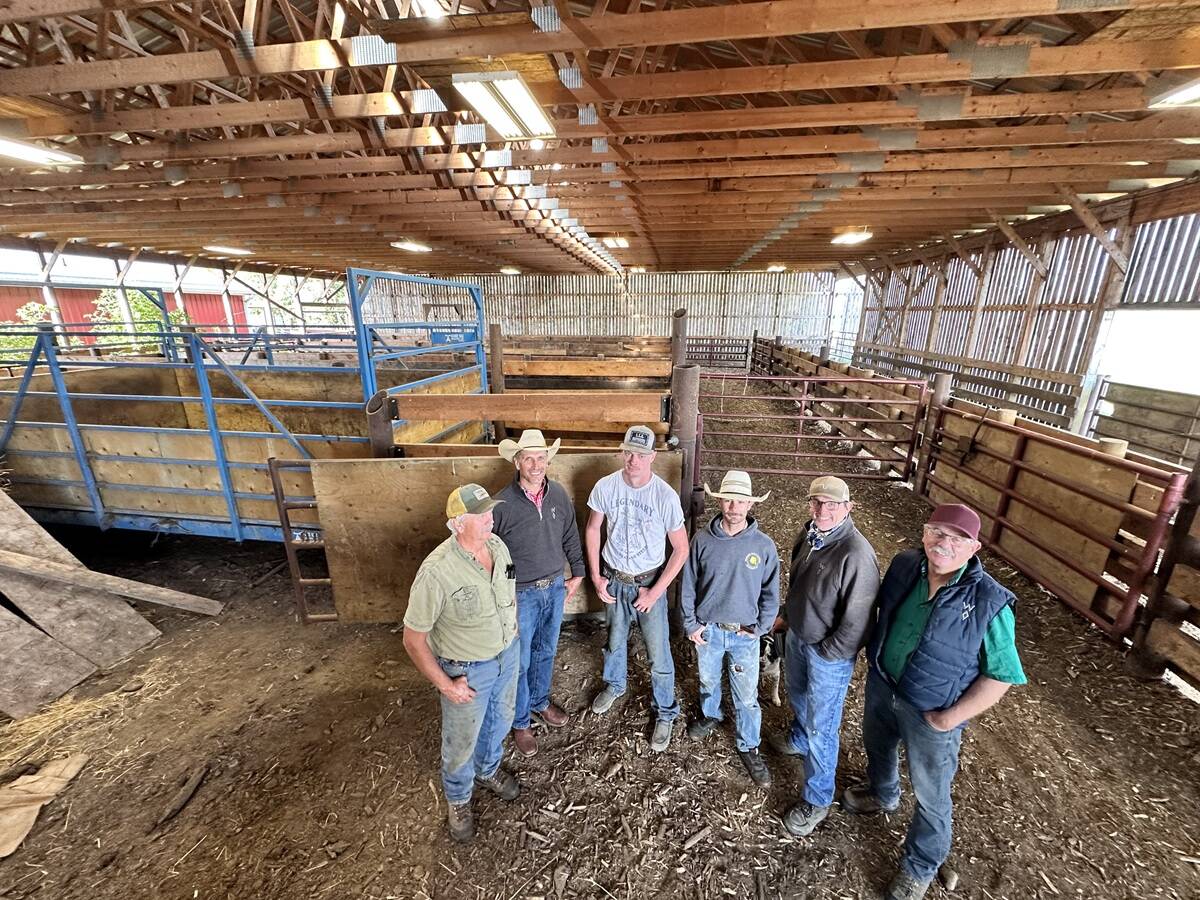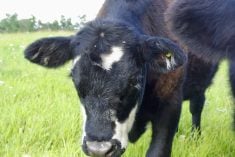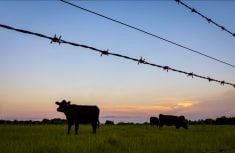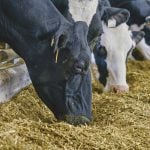As of April 1, 2014, anaplasmosis in cattle was removed from the list of federally reportable diseases. The federal government is no longer involved in controlling the disease. Import controls were basically removed. Cows purchased from infected areas of North America are no longer tested before entering Canada despite the fact that testing reduces the risk of introducing infected cows into Canada. Outside of producer and veterinary practitioner vigilance, animal health agencies have abandoned their control effort.
On February 26, 2013, CFIA admitted it had given up on “wiping out anaplasmosis.” Statements given at that time include:
Read Also

Farm families work together to graze cropland with cattle in the fall
These Alberta farm families have separate operations, but work together to manage their land
- In that the disease has become “established” in U.S. herds, Canadian inspectors will no longer respond to new cases of anaplasmosis starting next spring.
- CFIA will remove anaplasmosis from Canada’s list of federally reportable diseases effective April 1, 2014, placing it instead on the “immediately notifiable” list.
- There is a strong probability that anaplasmosis will enter Canada from the U.S. and the continuing attempt to eradicate the disease within Canada may not be feasible.
- Once that happens, only laboratories will be required to report suspected or confirmed cases of anaplasmosis to the CFIA, thus allowing Canada to still meet the annual reporting requirements of the World Organization for Animal Health (OIE) on the disease.
- As of April next year, CFIA “will no longer respond” to anaplasmosis cases, nor run surveillance to verify Canada’s status for the disease.
- Anaplasmosis, caused by a micro-organism parasitic to red blood cells, affects ruminants including cattle, sheep, goats and deer, but only causes clinical signs in cattle and giraffes. It remains of “economic importance” to the cattle sector in infected countries, including the U.S.
Anaplasmosis in cattle, caused by Anaplasma marginale, became a federally reportable disease in December 1969 after Canada’s first outbreak in Manitoba the previous year. Anaplasma marginale poses no direct human health or food safety risk. It is a disease of ruminants, including several deer species and bison, although only clinically apparent in cattle. Transmission is by competent ticks, or mechanically through transferring blood from infected animals via biting flies, needles and instruments. In Canada, Dermacentor andersoni and Dermacentor variabilis ticks have been shown to be competent biological vectors for A. marginale. Cattle surviving infection remain carriers for life, even if treated with tetracycline.
Five occurrences of anaplasmosis have been previously recorded in Canada: Manitoba in 1968, Quebec in 1979, Saskatchewan in 1983, Ontario in 1996, and Saskatchewan in 2000. With the exception of the 2000 outbreak that occurred in bison, all involved beef cow-calf operations. Incursions of A. marginale into Canada from the U.S. probably occur naturally during migration of infected deer and antelope, or by deer carrying infected ticks.
Clinical signs of anaplasmosis
- Cattle of all ages become infected but the severity of disease is age dependent with cattle less than a year old showing no or very mild clinical signs of the disease.
- Cattle between one and two years of age will develop acute clinical disease manifested by fever, going off feed, rapid shallow breathing, reluctance to walk, and pale mucous membranes. Fatalities in this group are rare. Milk production in affected dairy cattle rapidly declines.
- Cattle older than two years of age also develop acute clinical disease, which may result in sudden death.
- Fatality rates in animals older than two years experiencing clinical disease can range from 29 to 49 per cent.
- Infected animals remain persistently infected carriers for life and remain reservoirs for infection. Current science indicates that short-term treatment of infected cattle with tetracycline only temporarily eliminates the organism, but does not eliminate the carrier state. Eliminating the carrier state requires long-term treatment with tetracycline, which poses the challenges of expense, off-label use of an antibiotic, milk and meat residues and suitable delivery mechanisms.
- Anaplasmosis persists in cattle herds in certain parts of the country. This persistence, or “endemic” nature, of the disease, needs two things: a vector (tick) population that is active throughout most of the year, and a population of persistently infected cattle. Persistently infected cows can give birth to calves that are persistently infected. Unless the infections are extensive enough, or infected animals are placed under sufficient stress, signs of illness might never occur.
Anaplasmosis is the most common tick-transmitted disease of cattle worldwide and represents a major obstacle to profitable beef production in the United States. Introduction of anaplasmosis into a naive herd can decrease calf crops by 3.6 per cent and increase cull rates by 30 per cent. Without treatment, mortality in clinical cases often exceeds 30 per cent. Studies have shown that 16 per cent of pregnant carrier cows transmit A. marginale in utero producing persistently infected offspring. Total cost to the beef industry in the U.S. is presently estimated in excess of $300 million annually.
Many veterinary disease specialists believe the risk of introducing A. marginale has increased. The prevalence of anaplasmosis has surged in some western states. Kansas, for example, has positive herds in a very large percentage of counties and in 2015 mustered producers, veterinarians and extension personnel to address how they should co-ordinate their response to the disease. Several experts feel the increasing distribution of A. marginale in the U.S. can be attributed to increased cattle movement and changes in tick activity attributable to climate change.
Regulatory change means that only laboratories are required to report suspected or confirmed cases to the Canadian Food Inspection Agency (CFIA). CFIA no longer responds to anaplasmosis cases detected on farms, nor will it conduct surveillance to verify Canada’s ‘anaplasmosis status’. For the most part, cattle, bison and elk producers have to work with their herd veterinarian to deal with cases of anaplasmosis and will be responsible for prevention, testing and treatment of the disease on the farm.

















